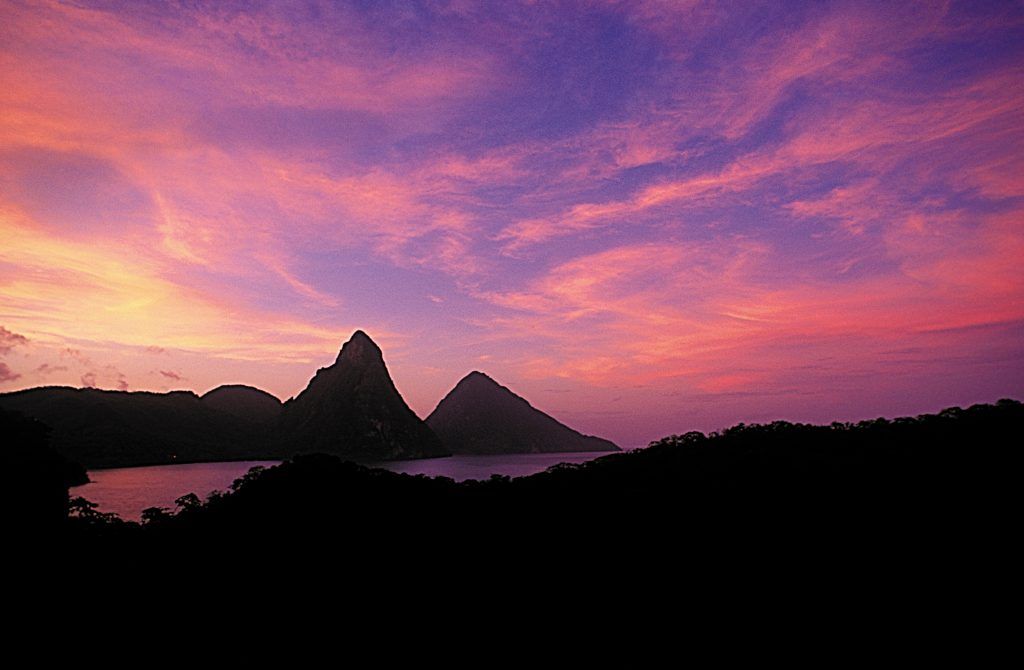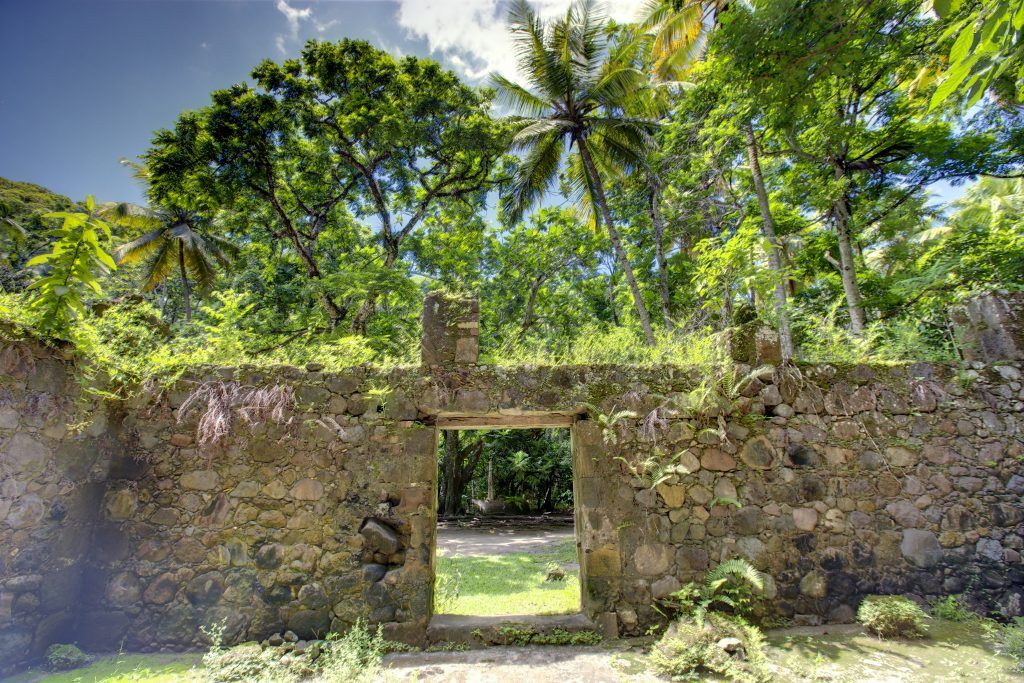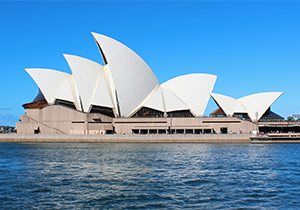St Lucia facts!
Explore this awesome Caribbean island…
Fascinating culture, wonderful wildlife, lush rainforest and breathtaking mountains – join us as we head to the incredible Caribbean with our St Lucia facts!
St Lucia facts
OFFICIAL NAME: Saint Lucia
FORM OF GOVERNMENT: Democratic constitutional monarchy, with Queen Elizabeth II as its Head of State.
CAPITAL: Castries
POPULATION: 178,844
OFFICIAL LANGUAGE: English, though many residents speak in Saint Lucian French Creole.
MONEY: Eastern Caribbean dollar
AREA: 616 square kilometres
MAJOR MOUNTAIN RANGES: Gros Piton and Petit Piton; they are linked by the Piton Mitan ridge.
HIGHEST PEAK: Mount Gimie (950m)
VOLCANO: La Soufrière (also known as La Grande Soufrière or Qualibou).
FLAG:

St Lucia’s geography

St Lucia is one of more than 7,000 individual islands found in a region of the Americas called the Caribbean. It’s also one of the region’s 13 sovereign nations – an independent territory with its own government.
Rising from the waters of the Eastern Caribbean, St Lucia forms part of a chain of volcanic islands known as the Lesser Antilles. But don’t worry – the land’s blas-tastic explosions are a thing of the past! St Lucia’s volcano, La Soufrière, last erupted in 1766 and is now considered dormant.
Today in fact, people visit St Lucia for its volcanic geography and geothermal activity. Check this out – heat from the Earth’s core creates natural hot pools and bubbling mud springs where people can enjoy a natural, super-relaxing bath!
The island of St Lucia is also known for the Pitons – a famous pair of pointy mountains! The Pitons stand tall on the west coast, where they are lapped by the calm waters of the Caribbean Sea. Across the island on the east coast, the land meets the Atlantic Ocean, which is much more choppy!
St Lucia may only be a small island – 43 kilometres long and a maximum of 23 kilometres wide – but its landscape is incredibly varied. There are breathtaking mountains, lush rainforests, volcanic sand beaches and colourful coral reefs! This makes St Lucia a popular place for tourists to visit from all around the world – especially people who love to dive and snorkel!
St Lucia’s wildlife & nature

St Lucia is well-known for its vast variety of birdlife! The national bird of St Lucia is the Saint Lucian Parrot (the Amazona versicolor), which is one of five native parrot species and 157 bird species that live on the island. As many as 45 of these species can be found in the rainforest, including three species of hummingbirds – the Antillean Crested Hummingbird, the Purple-throated Carib and the Green-throated Carib.

St Lucia is also home to lots of incredible marine life, such as dolphins, whales and sea turtles! In fact, three species of sea turtles swim off the coast of this beautiful island – leatherbackturtles, hawksbill turtles and green sea turtles. Cool, eh?

Some surprising and quirky wildlife species live on the island, too – including the agouti (a member of the rodent family), as well as mongooses, opossum, bats and wild pigs.
And let’s not forget the country’s rad reptiles! Four snake species can be found on the island – the worm snake, the St Lucia lance head (the fer de lance, a viper), the St Lucia racer and the St Lucia boa constrictor. There are also 12 species of lizard, including the fascinating St Lucia whiptail lizard. Discovered in 1958, it’s regarded as one of the rarest lizards in the world!
St Lucia’s history

St Lucia hasn’t always been St Lucia! Way back in 200AD the island was called Iyonola, by the Arawak Indians who lived there. Hundreds of years later, in 800AD, another group of Amerindians called the Caribs took control of the land and named it Hewanorra. The island’s current name only came into existence with the arrival of the Europeans in the early 16th Century.
DID YOU KNOW?
St Lucia’s previous names, Iyonola and Hewanorra, mean “island of the iguanas”.
Historians believe Europeans first came to the island around 1500 – when European countries were searching for new lands to claim as their own. However, faced with hostility from the Caribs and ill health, their first attempts to colonise the island (send settlers to live there), failed.
In 1650, the French managed to successfully establish a lasting settlement, and in 1660 they signed a peace treaty with the local Caribs, agreeing to live in harmony. But just a few years on, from 1663 to 1667, England took control of the island.
For years to come, the French and English fought over St Lucia – each ruled the island seven times. In fact, St Lucia switched so often between English and French rule, it became known as the “Helen of the West Indies” – after the Greek mythological character, Helen of Troy. But in 1814, the British took definitive control of St Lucia, making it a long-standing colony of the British Empire.
You can read more about the British Empire and its long-lasting affects on people and cultures around the world, in our British Empire facts.
The Europeans grew valuable crops, like sugar and cotton, in St Lucia, and other lands in the Americas. To provide workers for the plantations, they forcibly shipped millions of African people across the Atlantic Ocean to work as enslaved people – in inhumane and often violent conditions. This became known as the Transatlantic Slave Trade. By the time slavery was abolished (ended) in St Lucia in 1834, there were more than 13,000 black slaves, around 2,500 free black people and around 2,300 white people living on the island.
Over the course of the 20th Century, British colonies around the world claimed their independence – meaning they were no longer under British rule. St Lucia was one of the last colonies to do so, becoming an independent nation in 1979.
St Lucian people & culture
 The entire population of St Lucia is approximately 178,000 people. Whilst it may be a small country, centuries of settlers from all around the world have made it rich in culture. Today it is home to a range of religions, music, languages and delicious foods!
The entire population of St Lucia is approximately 178,000 people. Whilst it may be a small country, centuries of settlers from all around the world have made it rich in culture. Today it is home to a range of religions, music, languages and delicious foods!
The large majority of the people are descended from black Africans, brought to St Lucia as enslaved people during centuries of European rule. There are also many mixed-race people with African, European and Carib heritage, as well as smaller groups of white people (of European decent). East Indians form a small minority on the island – these are mostly decedents of people from India, brought to work on the island when St Lucia was part of the British Empire.

Although English is the official language of St Lucia, a larger percentage of people speak a French dialect known as Creole – a legacy left by early French settlers on the island.
Every October, the island celebrates Creole Heritage Month, a mix of colourful street parties, art exhibitions, music, theatre, talks, and delicious food! The celebration marks the end of the St Lucia Summer Festival and is a time for St Lucian’s to celebrate their heritage.
St Lucia’s government & economy

St Lucia is a democratic country, run by a prime minister and government, elected (voted for) by the people of the country.
In 1979, St Lucia became a member of The Commonwealth – an organisation headed by Queen Elizabeth II which countries can choose to join, or leave. Countries of The Commonwealth work and trade together, and share a common set of values, including fair political elections and the respect of human rights.
St Lucia’s economy depends primarily on tourism and agriculture – particularly bananas and other exotic fruits, such as mangoes. Clothing and electronic goods are also exported too, but on a smaller scale.
British Airways offers flights from London Gatwick to St Lucia from £545 return. To book visit: www.ba.com. Find out more about Saint Lucia at www.stlucia.org.
Images ⓒ Anse Chastanet.
Anse Chastanet resort is within a short distance of Sulphur Springs drive-in volcano and mud baths and offers unique scuba diving opportunities, with Kids’ Sea Camp and Family Dive Adventures operating from its exclusive beaches. visit ansechastanet.com/ and familydivers.com for more information.
Figures accurate at time of publication, AUGUST 2020.
What do you think of our St Lucia facts? Let us know by leaving a comment!
More Like Countries

Cuba facts!

Australia facts: get ready for the lowdown Down Under!

Argentina facts!









LEAVE A COMMENT
THANK YOU
Your comment will be checked and approved shortly.
WELL DONE,
YOUR COMMENT
HAS BEEN ADDED!
COMMENTS
This a fab website
CAN'T WAIT !!!!!!!!!!!!!!!!!!!!
Woow
So interesting
Hello , this was so interesting
CUSTOMIZE YOUR AVATAR